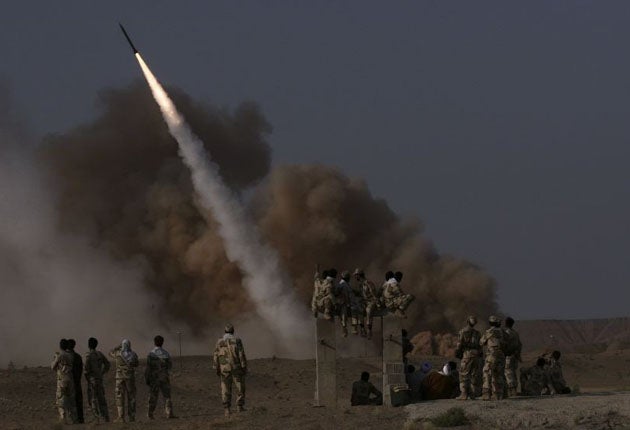Robert Fisk: Iran's war games go underground
World Focus


Your support helps us to tell the story
From reproductive rights to climate change to Big Tech, The Independent is on the ground when the story is developing. Whether it's investigating the financials of Elon Musk's pro-Trump PAC or producing our latest documentary, 'The A Word', which shines a light on the American women fighting for reproductive rights, we know how important it is to parse out the facts from the messaging.
At such a critical moment in US history, we need reporters on the ground. Your donation allows us to keep sending journalists to speak to both sides of the story.
The Independent is trusted by Americans across the entire political spectrum. And unlike many other quality news outlets, we choose not to lock Americans out of our reporting and analysis with paywalls. We believe quality journalism should be available to everyone, paid for by those who can afford it.
Your support makes all the difference."Deep" underground missile silos with iron roofs, a televised launch of Iran's Shehab-3 missiles – with a 2,000km range (and we all know what that means) – even a suitably Islamic title to the military "games", "Great Prophet-6", the whole shebang. Nothing new, of course, for the Islamic Republic has been threatening to respond to any attacks on its territory for years. But "deep silos" have something of a ring about them. If Israel and/or America decides to attack the country's nuclear facilities, then they're going to get bashed in return. Supposedly.
In the old days, we used to call this mutual deterrence. And since US forces virtually surround Iran – in Iraq to the west, in Afghanistan to the east, in the former Soviet Muslim republics to the north and in the Gulf waters to the south, the Iranians would have – to use the US military's own jargon – a "target-rich environment". If, that is, the Iranian missiles actually work as intended.
For in at least one previous tub-thumping exercise, the Iranian military went to great pains to doctor a photograph of a missile launch that deleted one rocket which in reality plunged back to the desert floor shortly after being fired.
But there was Colonel Ashgar Qelichikhani, a military spokesman, on Iranian state television announcing that his silos "function as a swift reaction unit" and that "missiles, which are permanently in the vertical position, are ready to hit the pre-determined targets".
The Revolutionary Guards, who have more decision-making potential than the army or air force in Iran, said that there were "numerous" underground silos which satellites cannot detect.
Not only Israel but parts of Eastern Europe – let alone American forces in the region – therefore come within theoretical range of the Shehab-3s. Whether the missiles and silos are home-grown technology – as the Iranians claim – or whether they include North Korean, Chinese or even Russian parts, we will discover if or when Iran shoots in earnest; or whether, if Iran's deterrent claim is true, if or when Israel and/or the US shoots in earnest.
All in all, it's as well to remember that these "war games" – the Iranians have eagerly adopted the western cliché for such exercises – have gone on several times a year for the past nine years; almost as many times, in fact, as the number of warnings from the Israelis and the Americans that the Islamic Republic can produce nuclear warheads within 10 years, six years, one year or even by the year 2000 – yes, 2000 – an Israeli claim which now necessarily looks a bit dodgy. Like a lot of the rhetoric from all sides in the Middle East, including Iranian state television.
Join our commenting forum
Join thought-provoking conversations, follow other Independent readers and see their replies
Comments